This post may contain affiliate ads at no cost to you. See my disclosures for more information.
I’ve done a version of this dancing raisins experiment with my kids a couple of times over the years. We initially did this activity as part of our discussions about states of matter. But it also works really well for a unit on density.
When I was developing my Density STEM Pack, a comprehensive curriculum for teaching kids about density, I knew I had to include the dancing raisins activity because it perfectly illustrates the concept of combined density. Combined density is what we get when two objects with different densities combine together with a new density that is somewhere between the densities of the individual objects.
In addition to being a great learning tool, these dancing raisins are super fun to watch and will leave kids mesmerized with their continual up and down motion.
Note: Find more STEM activities on my Science Activities for Kids page!
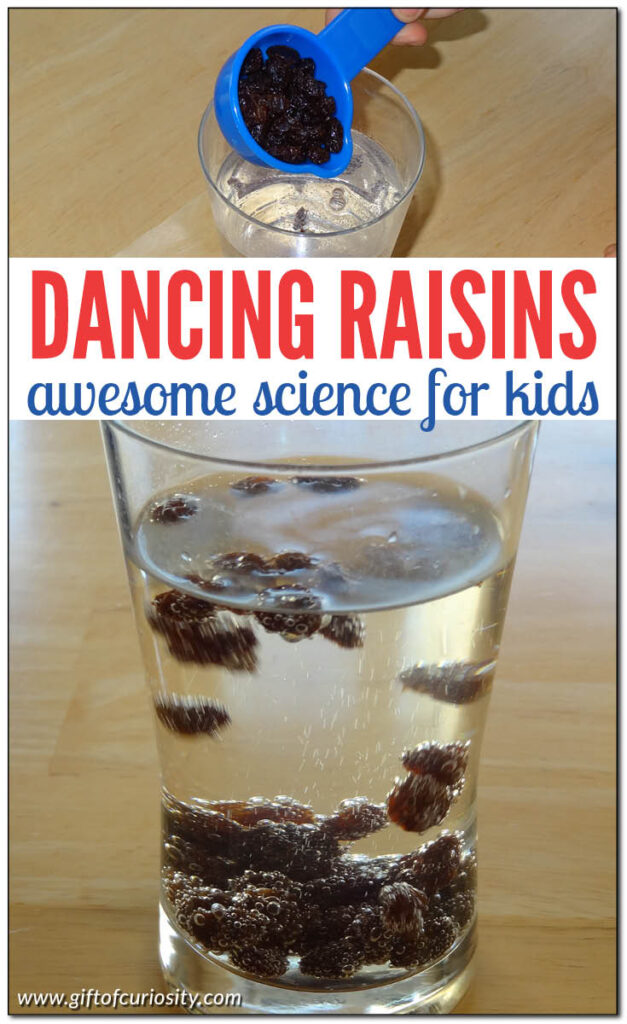
The dancing raisins experiment requires the following materials:
- Two tall glasses
- A clear carbonated beverage (e.g., carbonated water or a clear-colored soda)
- Plain water (e.g., from the tap)
- A handful of raisins (we used 1/3 cup in each glass)
To begin, I filled one glass with water and another glass with our clear, carbonated beverage.
The kids then helped me pour 1/3 cup of raisins into the water glass.
We noticed that the raisins in the water glass just sat at the bottom of the glass. Nothing much interesting going on here!
The kids then poured 1/3 cup of raisins into the glass with a carbonated beverage.
Almost immediately our raisins began dancing! They would get covered in bubbles and then break away from the pack at the bottom. They rose quickly to the top. Once at the top, they lost some of their bubbles and would sink back to the bottom. This continued on for quite some time as we sat mesmerized by the show going on in front of us!
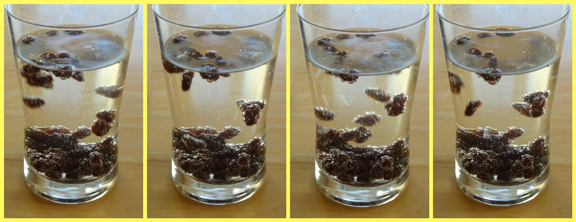
The science behind the dancing raisins activity
So how and why does this work?
Carbonated beverages are filled with a dissolved gas called carbon dioxide. At the bottling factory, the dissolved gas is sealed into the drink when the lid is put on. When you open the bottle, the gas starts to come out of the spaces between the molecules of liquid. When it does this, it forms little bubbles.
Raisins are more dense than the liquid, and therefore sink to the bottom of the glass at first. However, the the bubbles from the liquid form a “bubble jacket” on the raisins until the combined density of the raisins and gas is lower than the density of the liquid, causing the raisins float to the top of the liquid. When the raisins reach the surface, the bubbles pop. Without their “bubble jackets,” the raisins are more dense than the liquid, and thus sink back down again.
You can find this and other activities about density in my Density STEM Pack. Here is a sneak peak at the teacher instructions and student instructions for the dancing raisins activity in my Density STEM Pack:
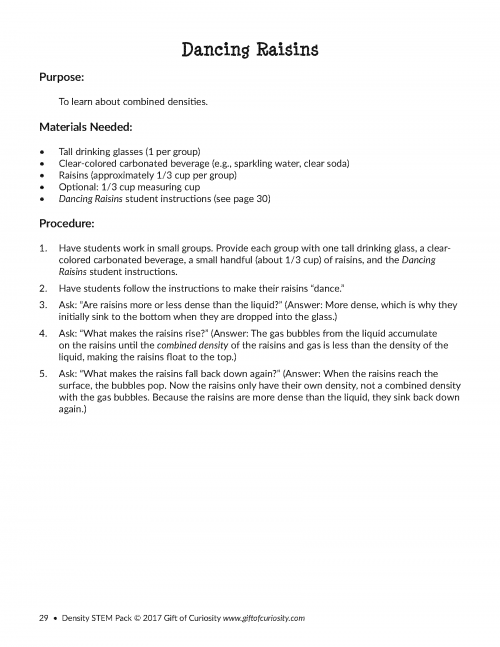
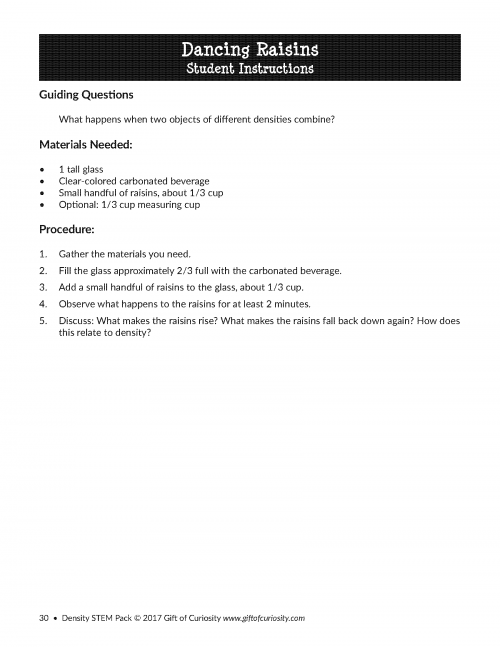
Who is the Density STEM Pack appropriate for?
The activities in the Density STEM Pack can be adapted and used with children from preschool through middle school to have fun and learn important concepts about density. The student worksheets provided for these activities are written for kids in fourth through eight grades, but a teacher or parent could easily adapt all but two of the activities for younger students by working directly with the students rather than asking them to follow the written instructions.
Truly, kids of all ages will have fun with all the activities in this pack!
Want a copy of my Density STEM Pack?
Add this product to your cart by clicking the button below!
More STEM & STEAM activities for kids
More science posts from Gift of Curiosity:
- Sink or float activity
- Bubble STEM activities
- Dancing raisins
- Advanced patterns worksheets
- Dissecting an apple
- What do ants like to eat?
- Make your own telescope
- Engineering challenges for kids
Find more great science activities on my Science Activities for Kids page and my Science Activities Pinterest board.

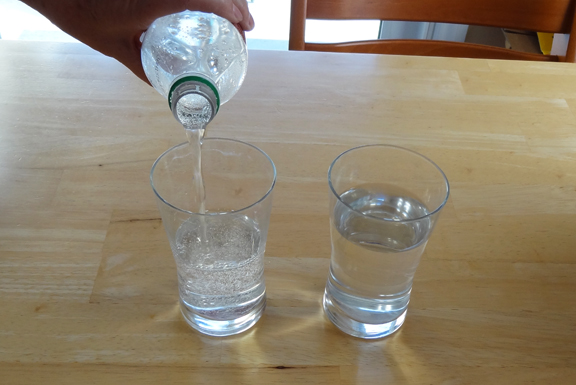
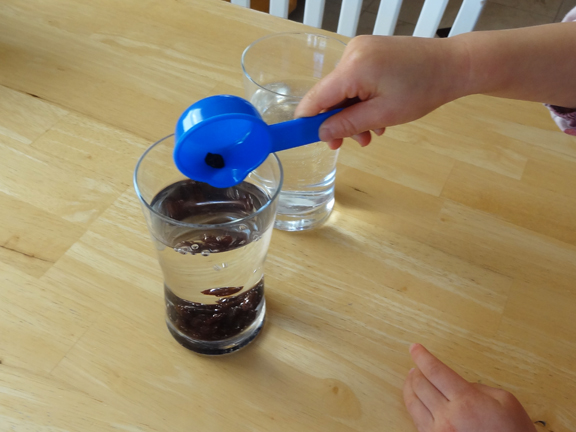
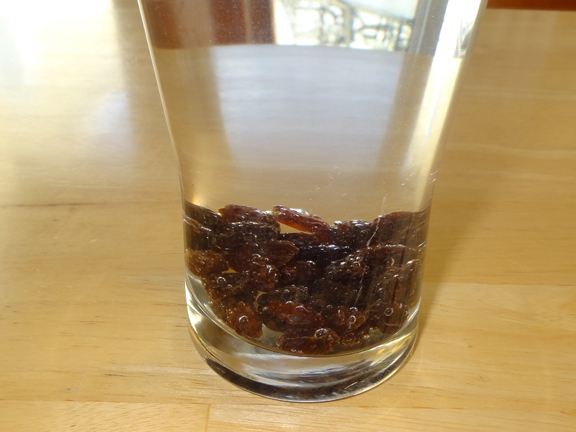
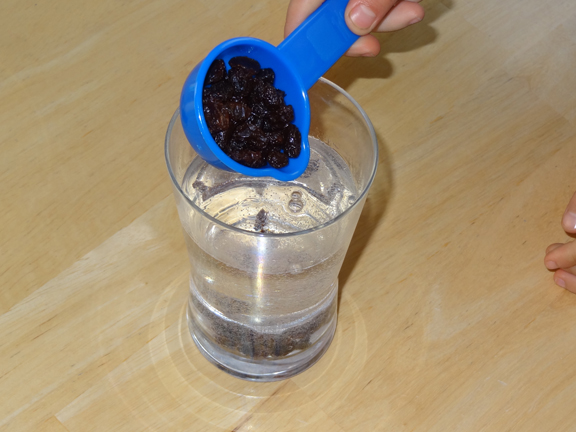


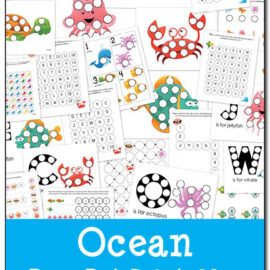
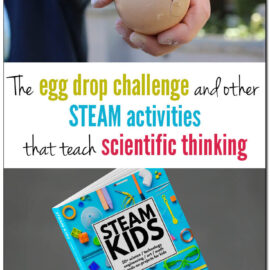

I love this! As soon as I can get to the store and get something carbonated, we’re going to give this a try! 🙂
Cool. Great way of incorporating a pouring activity into a science experiment. Simple with good results. Thanks for sharing.
Renae
Thanks for this idea and the note at the bottom. I was just thinking I could use less based on the pictures, but will definitely try this soon with the 1/3 cup! I think my kids will get a kick out of it.
This is a good experiment to demonstrate gases. I’ve liked your series btw. Thanks for sharing at the After School Link Up.
This also shows convection!
This was so fun, thank you! my girls extended it a bit by seeing what other objects would float with the bubble jackets. We tried blueberries, olives, paper clip, fridge magnets – the possibilities are endless. Fun. Thank you!
I love that your girls tried new things. It’s so great when kids get curious and want to experiment.